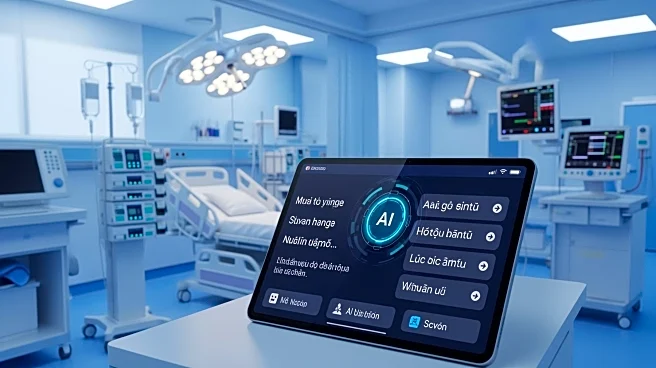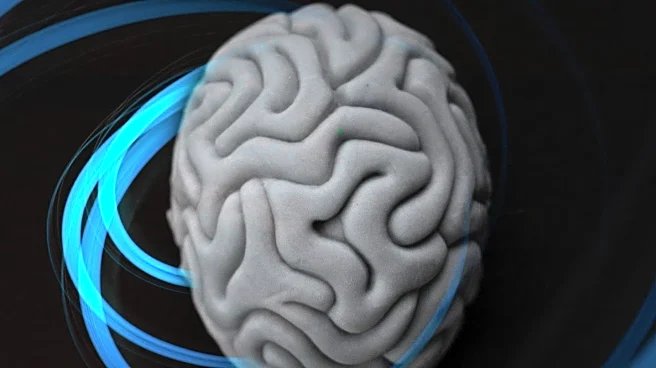What's Happening?
Recent research has explored the use of acoustic holograms for precise spatial targeting within the brain. The study focused on the ability of planar transducers to produce focal volumes of varying sizes, which can be used to treat larger brain areas
simultaneously. The research tested a range of lenses with focus diameters from 1 to 28 mm, finding that the minimum focus size was limited by the transducer's frequency. The study also examined bifocal acoustic lenses, which showed promising results in maintaining distinct focal points over a range of separations. Additionally, the research investigated the impact of focal depth on targeting accuracy, demonstrating that ultrasound technology can achieve a wide range of penetration depths. The study's findings suggest that acoustic holograms can overcome challenges posed by the human skull, making them viable for clinical applications.
Why It's Important?
The development of acoustic holograms for brain targeting has significant implications for medical treatments, particularly in non-invasive procedures. By enhancing the precision of ultrasound targeting, this technology could improve the effectiveness of treatments for neurological conditions, potentially reducing the need for invasive surgeries. The ability to focus on multiple points or larger volumes simultaneously could lead to more efficient therapies, benefiting patients with conditions like brain tumors or epilepsy. Furthermore, the technology's ability to overcome skull aberrations suggests it could be adapted for personalized treatments, taking into account individual anatomical differences. This advancement could revolutionize the field of neurology, offering new avenues for research and treatment.
What's Next?
Future research will likely focus on refining the technology to further improve targeting accuracy and reduce errors. This could involve developing higher frequency transducers or optimizing the design of holographic lenses. Clinical trials may be conducted to assess the safety and efficacy of this technology in real-world medical settings. Additionally, researchers may explore the potential of acoustic holograms in other areas of the body, expanding their application beyond neurology. As the technology advances, it may attract interest from medical device manufacturers and healthcare providers, potentially leading to new partnerships and innovations in medical treatment.
Beyond the Headlines
The use of acoustic holograms in medical applications raises ethical considerations, particularly regarding patient consent and the potential for unintended effects. As with any new medical technology, rigorous testing and regulatory oversight will be essential to ensure patient safety. Additionally, the technology's ability to target specific brain areas could have implications for privacy and autonomy, particularly if used in cognitive or behavioral interventions. These considerations will need to be addressed as the technology moves from research to clinical practice.













